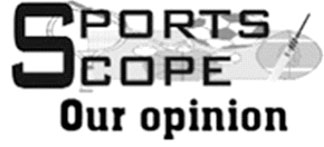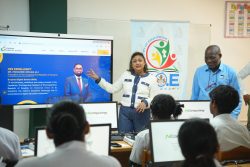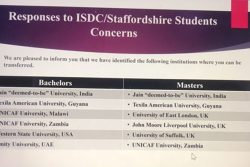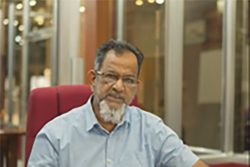 The campaign of the Lady Jaguars in the CONCACAF Women’s U20 football championships where they created history by becoming the first national U20 female team from Guyana to play in that 16-team tournament reflected somewhat the relative uncertainties and eventual successes which occur in the beautiful game.
The campaign of the Lady Jaguars in the CONCACAF Women’s U20 football championships where they created history by becoming the first national U20 female team from Guyana to play in that 16-team tournament reflected somewhat the relative uncertainties and eventual successes which occur in the beautiful game.
A quarterfinal appearance combined with a record of three wins and two losses in the preliminary rounds can be viewed as nothing but a successful campaign for the team.
Leading up to the quarterfinal, victories were recorded against Nicaragua (3-1), Puerto Rico (2-1) and the Cayman Islands (2-0).
Their defeats, which were predicted by analysts and objective thinkers alike, occurred against defending champions Mexico and regional giants Haiti whose men’s team in in 1974, became the second Caribbean nation to qualify for the FIFA World Cup Finals following Cuba in 1938.
The anticipated conclusion at the hands of the Haitians came via a 3-0 score line, the identical score of the Mexico defeat in the earlier group round.
The aforementioned victories must be put into context as the Lady Jaguars were among eight teams making their respective debuts at this juncture of the CONCACAF U20 competitions.
The other Caribbean representatives were Barbados, Bermuda, Grenada, Puerto Rico, St Kitts and Nevis and St Lucia. El Salvador was the final debutante and is a member of UNCAF, a sub-confederation of CONCACAF.
Previously, Nicaragua featured in the championship rounds of the 2002, 2008 and 2018 competitions. They also participated in the 2012, 2014 and 2015 qualifying rounds. Cayman Islands made their first appearance in the 2014 championship, but as the host nation.
The Puerto Ricans featured in the 2012, 2015 and 2018 qualifying tournaments. Likewise, Guyana also featured in the 2012 qualifying tournament, making it all the way to the second round. Further analysis indicates that Guyana entered each fixture and owing to their status as a debutante and following years of inactivity, were the lowest ranked side at 23rd.
The rankings of their opponents are as follows: Mexico – 2nd, Haiti – 4th, Nicaragua – 12th, Puerto Rico – 15th and Cayman Islands – 16th. Simply put, Guyana’s respective adversaries were more experienced and, as such, the positive results must be heralded and championed. Well done ladies!
Head-coach Dr. Ivan Joseph during post-match comments had remarked, “Haiti was physical, they were fast, they were technical, they were tactically sound, they were well-organised, they were well disciplined; we were overmatched. Having said that, I am proud of the way the girls played; they fought with heart, they hustled to the end. They were committed, they worked hard, I’m proud of the effort and how they portrayed themselves in this tournament.”
According to the head-coach, the quality displayed by the Haitians was realised following investment from their government, the Haitian Football Federation, and the Fédération Internationale de Football Association (FIFA).
He explained, “You see what the investment of the government, the federation and FIFA can do. They have their own academy; their own school system, they’re training 11½ months a year, they are training five hours a day, they’ve got a full-time staff of three and for us to even be able to be on the same field with them is testament to how well this team has played.”
Dr. Joseph’s comments are in essence correct. Investment is required if development is to occur in the women’s game. Interestingly, the question that arises is, which entity or individual, team or otherwise, should be afforded the praise for this monumental accomplishment? The management, staff and the players? Why certainly. The GFF, probably not.
The Lady Jaguars programme junior or otherwise, has been immune from the criticisms faced by their male counterparts, the Golden Jaguars. Although both programmes have witnessed the proliferation of foreign-born players within their rosters, the Lady Jaguars have escaped criticism due to the absence of local female football and overall lack of development of the women’s game. Admittedly, the Lady Jaguars setup has featured more foreign-born players than the Golden Jaguars programme.
Conversely, their successes are not as acclaimed in comparison to the men’s programme. The evidence is the Lady Jaguars 2010 Gold Cup qualification, an achievement which occurred nine years before the Golden Jaguars accomplished the identical feat, yet they were not afforded the equivalent level of pageantry in celebrating the achievement.
Andrea Johnson, President of the National Association for Women’s Football (NAWF), the local body which governs the women’s game, was a member of the travelling U20 contingent and would have experienced the euphoria surrounding the successful campaign.
However, reality sets in, as the core of the current team, 85 per cent to be exact, are products of the ‘Maple Leaf’ (Canada) and not Guyana, and this has become an inconvenient truth. The team featured 17 foreign-born or based players, all of whom train and play in Canada with colleges, clubs and academies. A far cry from the three locally-based players who were a part of the team.
Analysis of the minutes accrued for the local contingent indicates the expected and correct dependency on the foreign-based players. Of the 450 regulation minutes which formed the team’s campaign, the local players featured in 192 or 42%. Local player, Tiandi Smith accounted for 101 minutes or 52% of the local contingent playing time. She featured against Nicaragua – 25 minutes, Mexico – 45 minutes, Cayman Islands – 14 minutes and Haiti – 17 minutes.
The other two, Shamya Daniels and Horicia Adams, accumulated 53 and 38 minutes respectively. Daniels made appearances against Puerto Rico – 7 minutes, Mexico – 45 minutes and Cayman Islands – 1 minute, while Adams played against Mexico – 30 minutes and Cayman Islands – 8 minutes.
This missive is not a criticism of the team especially its foreign contingent. It is also not a marketing piece dismissing the inferiority of the locals. Frankly, the local players cannot compete with their foreign counterparts due to the dearth of quality training, infrastructure and playing minutes via regular competitions, elements that do not affect the foreign players in their advantageous first-world ecosystem.
The success of this team has less to do with the GFF and more to do with the ability of the management team and overall quality of its foreign cadre. The players and the coaching staff deserve all the praise and accolades for their accomplishment.
The million-dollar question is how will the local women’s game benefit from this historic accomplishment? Haiti is the ideal example of a CARICOM nation that has created a sustainable blueprint for local development, especially in the women’s game.
The Haitians, whose squad comprised of more than 70 per cent locally based players, were developed at Camp Nou, the country’s national football academy which was commissioned in 2012. They are also in the process of creating several regional academies to support in the development of the sport.
This against the backdrop of being the poorest country in the Western Hemisphere, with a Gross Domestic Product (GDP) per capita of $870 and a Human Development Index ranking of 168 out of 189 countries in 2018. According to United Nations Development Programme, 24.7 per cent of the locals live in extreme poverty, which is less than US$1.25 per day. Even more, approximately 59 per cent of Haitians live on less than US$2 a day.
The GFF receives annual funding from FIFA towards the development of women’s football.
However, the populace remains unaware of the amount received or the avenues the received funds are expended on. The federation has often remained mum on this issue and often, are unable to provide detailed information on this subject. It is time that the GFF and the Government of Guyana, take a similar approach to that of Haiti and create a blueprint for local development.








